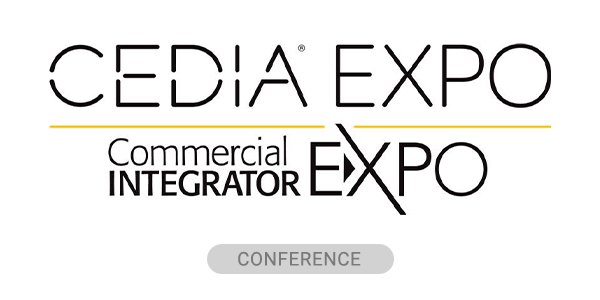A hallmark of any industry is continued professional learning and development, and this is especially true in the audiovisual (AV) industry, where there are design trends to keep track of and constant innovations. For as long as I can remember, I have been attending InfoComm in Orlando as part of my commitment to continued education. I have made both industry connections and lifelong friendships through my attendance, and it is an experience I look forward to every year. While I always leave with new insights and a fresh perspective on at least some aspect of my profession, this year’s experience and learnings were particularly unique.
For those unfamiliar, the purpose of InfoComm is to provide a forum in which AV integrators and other industry professionals can see current products and upcoming releases while they present, discuss and debate trends and potential challenges. It’s always a format that encourages thought-provoking conversation, but this year’s conference surprised me in that what I took away wasn’t “the usual” — in fact, this year’s data was mildly concerning and, truth be told, signaled some challenges for the industry as a whole.
Let’s put it this way: InfoComm 2023 opened up many people’s eyes to a large (and growing) gap in the AV technology world. Hardware developers, who set clients’ expectations when it comes to available solutions, are spending a lot of time, energy and effort on solutions that I think are made to meet immediate or short-term needs. In my opinion, they’re doing so at the cost of missing the mark on longer-term inevitabilities that will come to fruition in our industry.
The upshot of all this is that the situation is making it incredibly difficult for AV pros to find a balance between what a client really needs or maybe wants, and what available solutions we can offer them based on what’s on the market. A combination of factors are contributing to this current imbalance.
First of all, this gap is the lingering effect of our being in “recovery mode” for the past few years. The pandemic itself set the industry back in more than one way — supply chain, raw materials, client budgets and of course the fact that a lack of office presence made it harder for us to provide that all-important in-person consultation. The fact that we still remain in recovery mode has made it difficult to think long-term, as survival has been our driving theme for the past couple of years.
Another factor contributing to this widening gap can be summed up by an analogy: at this point in time, the commercial AV industry is a dog chasing its own tail. In practice, what that means is that we as an industry should be concerned with what our end-users, business customers and software developers are demonstrating as their current and future needs and wants.
That’s not what we’re doing, though. Instead, industry leaders are looking to each other (instead of their clients), mimicking products and attempting to one-up each other on the same hardware solutions.
Don’t get me wrong — this doesn’t mean that we’re not doing well as an industry, in terms of practical success for our clients. What it does mean is that we’re reacting, not acting to innovate and move our industry forward. In focusing on creating solutions for the current software and hardware, we’re forgetting to look to the future in such a way that we can solve our clients’ problems before they know they’re a problem.
Is there a way out? Yes, but it will take some work. To end this cycle, companies will have to be bold enough to stop watching those next to them and start looking forward with the goal of getting ahead of the curve. Whether they’re hardware producers or AV integrators, it’s time to start working on solutions that will meet the needs of software developers, modern offices and consumers.
At a 10,000-foot level, our industry lacks upper-level thought leadership that would push both manufacturers and developers in more creative directions. This disconnect could be solved by ensuring that upper-level executive positions are not composed just of business experts, but also of technical experts that will challenge business decisions based on the technical implications and requirements they have in mind.
As an industry, we are equipped to meet clients’ needs with what we have. As stewards of our clients and our industry, however, we need to do better. We should be able to meet client needs in the most efficient and functional way possible , which doesn’t just mean suggesting solutions that will be defunct in six to 12 months. Integrators need to be able to confidently suggest solutions that will last the test of time. We can take steps, together, to bridge the gap in the AV industry and become the kind of people who set the tone — starting the trends, not chasing them.
 Bill Thrasher is the COO of AV-Tech Media Solutions.
Bill Thrasher is the COO of AV-Tech Media Solutions.










